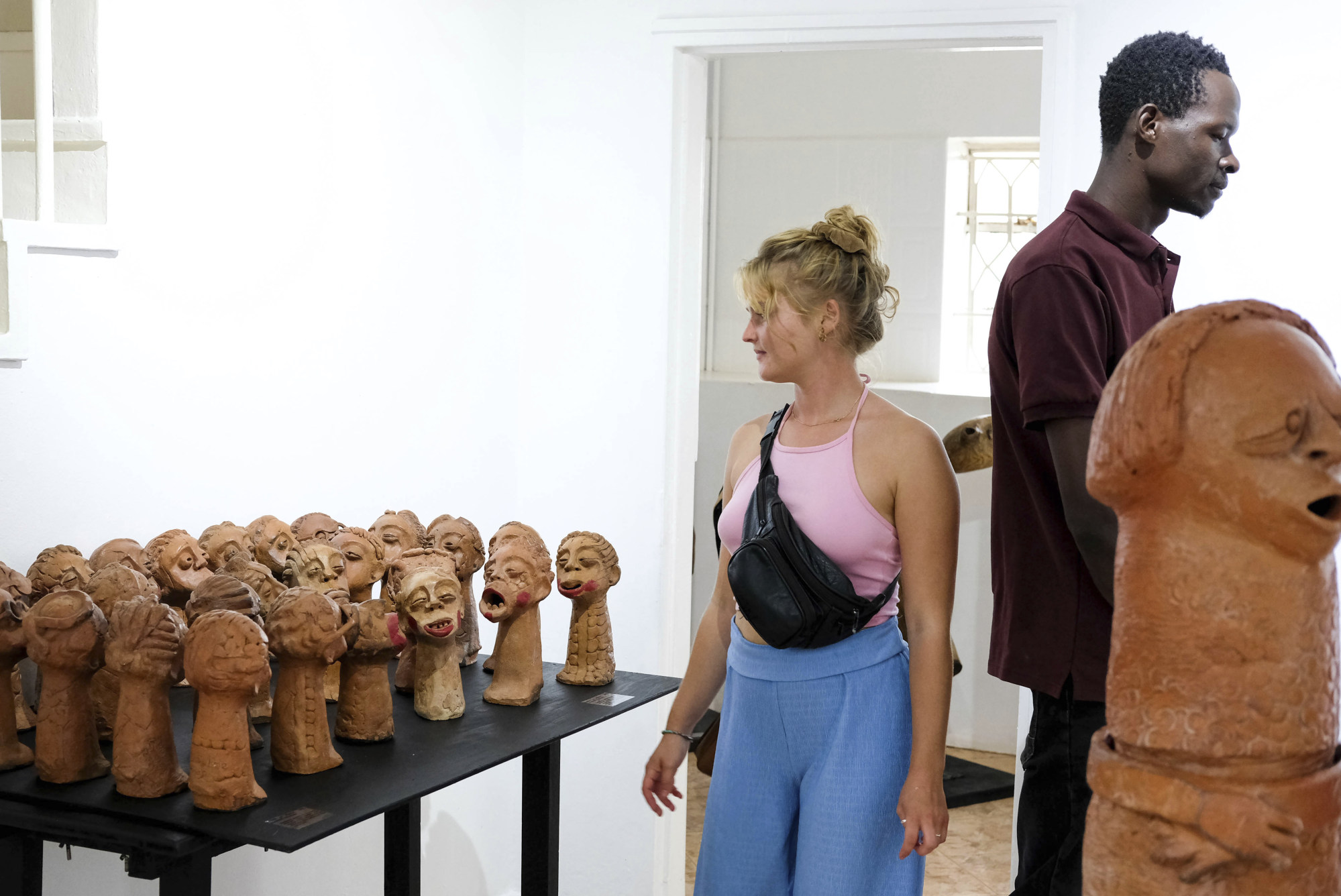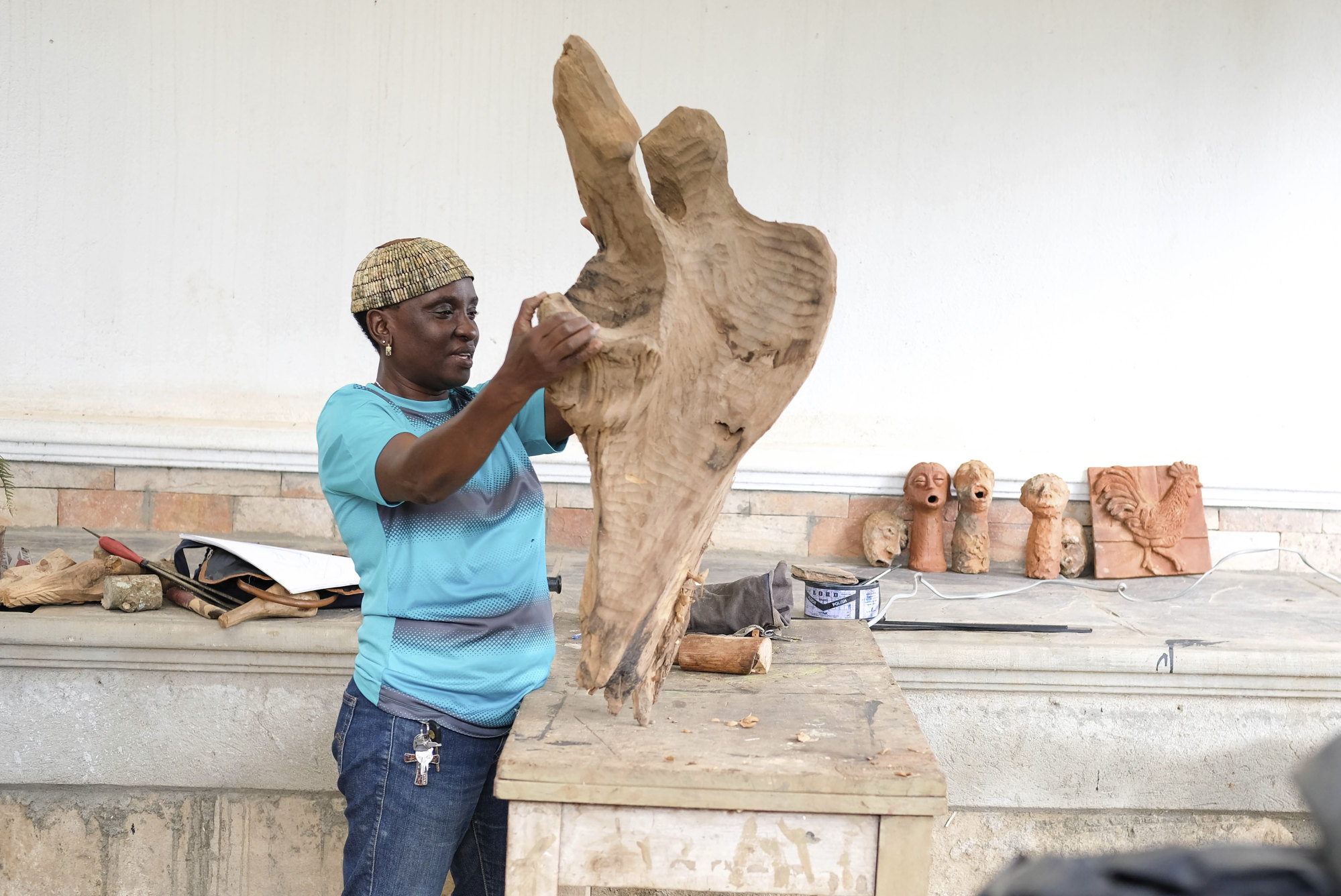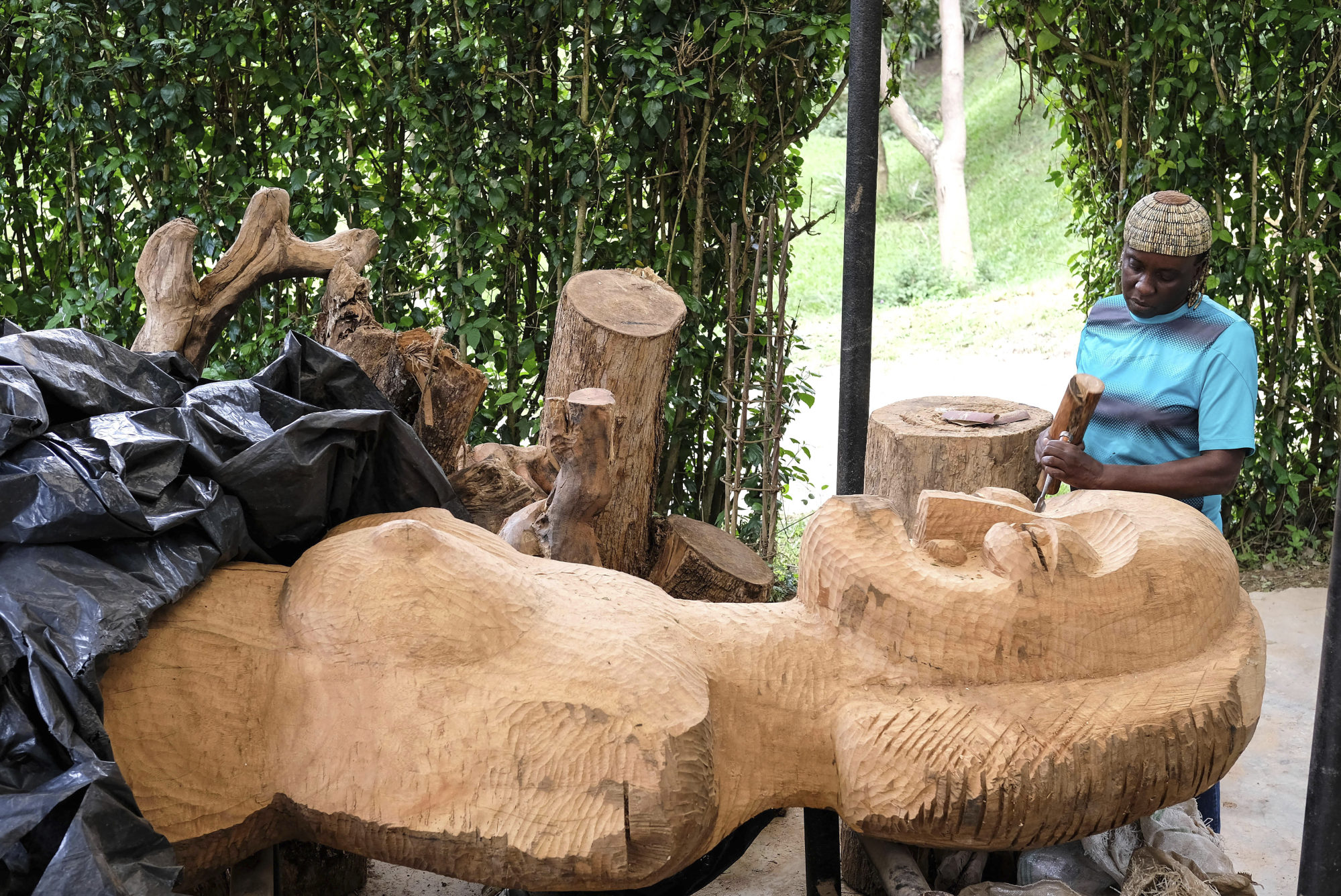“Nobody ever comes to me and says, ‘Oh, can we show your work’?” she said, sitting among her sculptures. “For me, I just decided and said, ‘Let me go and exhibit my work’. I asked for the exhibition, and they gave me the space.”

Her recent solo show exemplifies an expanding artistic landscape that allows more room for local artists who once struggled for space.
Their sense of cheer mirrors a similar trend across Africa that’s fuelled, not just by an explosion of compelling new work, but also by the growing ability of curators from the continent to reach new collectors at a time of rising global interest in modern African art.
First solo exhibition in Hong Kong of ‘rainbow artist’ Ay-O’s work
First solo exhibition in Hong Kong of ‘rainbow artist’ Ay-O’s work
There are fresh signs of this momentum. The Ivorian painter Aboudia was the world’s bestselling artist in 2022, selling two more artworks than the popular Damien Hirst, according to the Hiscox Artist Top 100 survey. And in November 2023, an artwork by the Ethiopian-born artist Julie Mehretu fetched US$10.7 million at auction, a record for an African artist.

One of Africa’s most prominent art spaces, Afriart Gallery in Kampala runs a training programme for artists, with the most successful among them now able to show their work abroad.
Founder Daudi Karungi usually invites some of his artists to join him at art fairs abroad, a key element in giving them international visibility, he said.
Those artists not represented by Afriart Gallery have choices, including an alternative space in a disused banking hall in the central Kampala district of Masaka, the scene of a vibrant artistic community that was unimaginable five years ago.
A painter born and raised in Uganda, Godwin Champs Namuyimba has had some of his pieces sell for upwards of US$100,000 at auction in Europe despite being largely unknown at home.
The regular art auction in Nairobi, the Kenyan capital, has also been critical in the reappraisal in recent years of Ugandan artists such as Geoffrey Mukasa, a painter who was underappreciated in his lifetime and died poor, but whose work now commands high prices.
Many of Mukasa’s works remained unsold by the time he died in 2009, but his work is now acknowledged as timeless, says Danda Jaroljmek, an influential curator whose Circle Art Gallery in Nairobi puts on the annual auction.
Uganda’s collecting class remains minuscule, and gallerists still struggle to make sales. In 2022, a small group of Ugandans formed the Contemporary Art Society of Uganda, whose goal is to promote the emergence of private and corporate art collections in the East African country of 45 million people.
Each of the group’s members is asked to collect at least one artwork by a Ugandan each year, creating opportunities for emerging artists.
Ugandan lawyer Linda Mutesi, an art collector who helped launch the Contemporary Art Society of Uganda, said that collecting for her and others has become a principled effort aimed at retaining Africa’s unique cultural resources.
“Over the years, the African middle class has been awakened to the things around them, the beauty around them and the issues that surround them and, as you can see, it’s always been the expatriates that sort of come to our countries and take all this art away,” she said.

“I feel that we are approaching the collecting of art as an intervention. We are sort of safeguarding and saying, ‘Hey, let’s not have this continue. Let’s not have the bleeding of these works, all this intellectual property leaving the continent. Let’s keep it here.’”
Additional reporting by staff reporter

